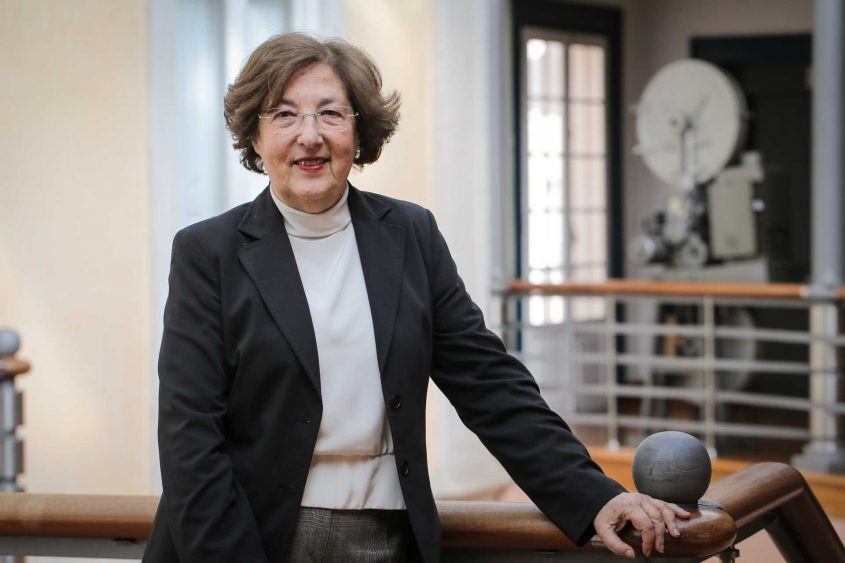RIO DE JANEIRO, BRAZIL – It is not strange that Sigmund Freud (1856-1939) opens the first of the three chapters of “O retorno de Júlia Mann a Paraty” (Júlia Mann’s return to Paraty), by Portuguese writer Teolinda Gersão, a book willing to analyze the Brazilian mother of German writers Heinrich (1851-1950) and Thomas Mann (1875-1955). The family is a full plate for the divan of the father of psychoanalysis, filled with incestuous, homoerotic relationships, Oedipus and Electra complexes. It is fiction, but all true, written in the epistolary format of letters not always sent.
The chapter “Freud thinking of Thomas Mann in December 1938” takes place nine months before his death at the age of 83, nine months after the annexation of Austria to Germany. Exiled in England, what bothers him is the ambiguity of the wealthy Thomas concerning Nazism.
“Thomas truly loved no one but himself, he had a distant relationship with his father, his mother attracted him ambiguously, he was ashamed that she was foreign.” He also rivaled his brother, Heinrich, and his son, caustic critic, Klauss (1906-1949). His books tell it all, like “Joseph and His Brothers.”

But it is in “Death in Venice” (1912), in Gustav Aschenbach’s passion for the Polish boy Tadzio, that Freud identifies the “homosexual drive that he never stopped hiding (…) Free sexual satisfaction is incompatible with civilization.
Thomas envied him, but he, too, circumspect, wished to be a conqueror like his countryman, writer, and physician Arthur Schnitzler (1862-1931), six years younger, “who attracted, like a magnet, women. He avoided him, as Thomas avoided meeting Freud. “To meet his double is a sign of death…the erotic drive and the death drive are the primordial forces, by whose polarity life is dominated.”
“Thomas Mann thinking of Freud in December 1930” reveals his erotic drive even towards the father of psychoanalysis, 19 years older: “I am trying to seduce you…at this moment, Dr. Freud, I am falling in love with you.” Thomas fell in love with his own son, Klaus, and with a 17-year-old friend of his, Heuser.
Thomas was at the Hôtel des Bains and fixated on an 11-year-old boy, as happens in “Death in Venice.” The incestuous love between Sigmund and Sieglinde in “The Blood of the Walsungs” reveals the love of his wife, Katia, for her twin brother, Klaus, from the Pringsteins, one of Munich’s wealthiest Jewish families.
Freud got it right – it was a loveless marriage to ensure quiet writing and yield a Nobel Prize in Literature in 1929. Thomas envied his bohemian brother, Heinrich, his mother’s favorite. Julia frequented the children’s books, such as “Between Races” – Heinrich always inserted a foreign character, mestizo and seductive women, actresses like Lola in “The Blue Angel”.
For Thomas, Julia inspired Gerda in “The Buddenbrooks”, Rodde in “Doctor Faustus”, Mother Consuelo in “Tonio Kröger,” and Gustav’s mother in “Death in Venice”. In “The Confessions of the Impostor Felix Krull, Brazil is a character.”
“The Return of Julia Mann to Paraty” suggests the suicide of Julia drowning herself like Virginia Woolf to return to Paraty through the waters that separate the Old Continent from the New Continent.
A foreigner in Europe, exotic, beautiful, and half-breed because her mother had indigenous blood in her family. Her laughter shocked the salons, and her music attracted men’s desire. She lived seven years free among parrots, monkeys, sea, shells, conch shells, buzzing and forest smells with her “black mother,” Ana. Julia lived happily with her mother in the hammock, eating sugarcane candy and drinking coconut milk.
Her father, Johann Ludwig Hermann Bruhns, a German from Lübeck, emigrated to Brazil at the age of 16, changing his name to João Luis Germano. He was a farmer and owner of sugar plantations between Santos and Rio de Janeiro. He married Maria Luisa da Silva, who died giving birth to their sixth child when Julia was six years old. The following year they all embarked to Germany. The brothers were separated, the father married his sister-in-law, and Julia went to live in a boarding house.
The magical land of colors was exchanged for a black and white world. The mother tongue was forbidden. She wanted to be an actress, but they wouldn’t let her. She wanted to marry the man she loved, but she was not up to it. At 17, she was forced to marry a merchant shorter than her, nervous and depressed, Thomas Johann Heinrich Mann, age 29.
Wanting to be loved, she became a janitor of furniture and crockery, a good hostess, in a marriage of 20 years of mismatches in bed, at the table, in the house, and in life, until the death of her husband, who, in his will, denied all assets to the family. Maybe punishment, the last son, was the fruit of the relationship with his violin teacher: Viktor was the only one who did not carry the “Mann grain of madness” in his blood.
The family was disastrous. Two of the five children committed suicide: Carla with cyanide, Lula, a morphinomaniac. Klaus, Thomas’ son, also killed himself. The work of the tormented Heinrich, Thomas and Klaus is saved. The last chapter is the year of his death, 1923, at the age of 71, officially in a hotel. Here, diving deep into the ocean to symbolically return to Paraty, where he would be happy again. Julia da Silva Bruhns kept until the end the Silva in her name.
With information from Valor Econômico

